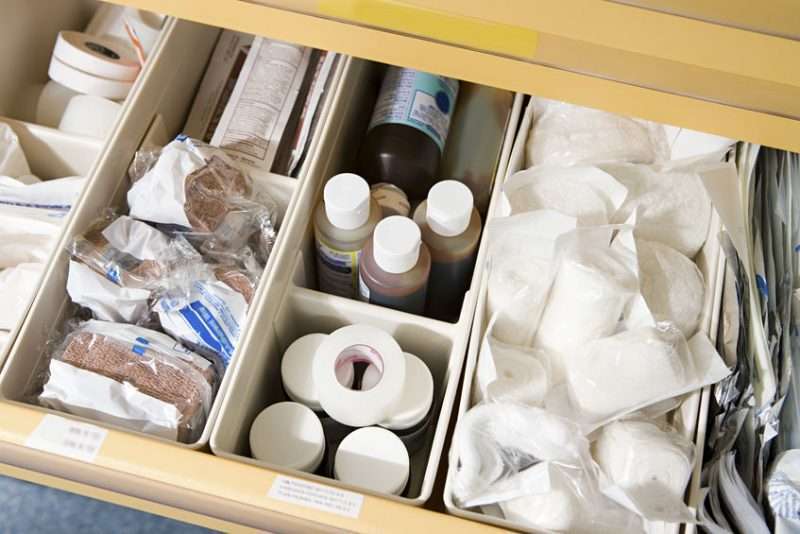-
How Can You Use Automation to Improve Purchasing in the Healthcare Industry?
Welcome to NextProcess’s Automate Your Industry blog series. In today’s post, we’re starting to take a close look at the benefits of automating financial processes when you’re in the healthcare industry.
Those working in healthcare face several unique challenges when trying to find the most efficient, reliable ways to manage finances. In purchasing, for example, keeping accurate records of inventories and ensuring that orders are placed for the correct items can make a huge difference with whether or not you’re prepared for an emergency. On top of that need for accuracy, you also need to make sure the software you use complies with rules and regulations specific to healthcare.
 Healthcare-Specific Procurement Challenges
Healthcare-Specific Procurement ChallengesThe supply chain in healthcare doesn’t look exactly like supply chains in most other organizations. Healthcare providers, and others involved in the healthcare supply chain, deal with a wide range of specific problems and challenges that directly affect procurement.
Hidden Costs
In the healthcare industry, it’s very rare for purchases to happen without multiple intermediaries. The true cost of purchases is not readily apparent because the industry is full of provider markups, vendor rebates, and other factors in the supply chain that muddy the final cost. On top of all that, inventory holding and distribution expenses can also drive-up the final cost of procurement.
Wasteful Spending
Hidden costs are one of several factors that contribute to another problem: wasteful spending. According to research published in the Journal for the American Medical Association (October 2019), wasteful spending accounts “for approximately 25% of total healthcare spending.” This wasteful spending includes “pricing failure,” which accounts for $230.7 billion to $240.5 billion wasted dollars.
Shortages and Overstock
Managing inventory is a constant challenge in healthcare. On the one hand, maintaining inventory requires large amounts of storage space as well as complex and often costly inventory management. There’s also the risk of products expiring before they are used. On the other hand, running out of essential supplies can literally be a life-or-death problem. Finding effective ways to manage inventory to avoid shortages and overstock is a core challenge in the healthcare industry.
Ordering Mistakes
It’s very easy to mix up order numbers when you’re ordering over the phone or on hand-written or hand-typed forms. Even a one-digit difference in product numbers can lead to a shortage of certain supplies and an overabundance of others. It’s also possible for important orders to be overlooked or placed multiple times. This usually happens if ordering responsibility is unclear or if there isn’t an easy way to check if a purchase has already been made.
Incorrect or Unavailable Data
In addition to problems with incorrect order numbers, your procurement system might not be providing easily accessible or complete records. Providers’ vertical, internal structures often “silo” supply chain data in healthcare. Accessing and using the data related to supply chains leads to more informed decisions, but it’s challenging to do that with many organizations’ current procurement systems.
Security Compliance
Organizations in the medical field have to conform to specific privacy regulations. Any software used for procurement must comply with all those regulations as well.
Solving Challenges with Purchasing Software
The unique challenges facing efficient, effective procurement in healthcare requires that automation software fills specific, specialized needs. The good news is that e-procurement software is uniquely suited to meet challenges facing healthcare organizations.
Tracking Real Costs
The complexity of pricing within healthcare means that automation software is your best bet if you want to fully account for hidden costs. Tracking and making sense of all the different factors that affect final purchase prices is far easier when people aren’t trying to do it by hand.
 Simplified Inventory Management
Simplified Inventory ManagementAutomating purchasing also makes it easier to implement 3-way matching and manage inventory to keep costs down there as well. When you can keep better track of the state of your inventory, it’s easier to see when it’s time to restock supplies. It also gives you better insight into any items that your organization frequently overstocks or runs out of quickly so you can plan your orders more efficiently.
Transparency in Spending
The detailed purchasing data that automation software collects gives your organization unprecedented insight into your spend. This helps cut down on wasteful spending and ordering mistakes. No more forgotten or duplicate orders—everyone with purchasing permission can simply log-in to the software to check on recent orders. No more incorrect orders either—you can customize our purchasing software with easy-to-use catalogs of approved items and vendors.
Reliable, Accessible Data
Transitioning to an automated procurement system is a first step to ensuring that your purchasing records are complete, reliable, and accessible. E-Procurement software tracks all purchasing information automatically and stores that information in a well-organized, easy-to-search electronic database. This puts vital information about your spend, procurement, and supply chain in the hands of decision-makers.
HIPAA Compliant Software
NextProcess’s HIPAA compliance means doctors, hospitals, and others dealing with sensitive patient information can use NextProcess software in their business. Our security protocols provide the technical safeguards necessary to maintain the confidentiality of patient information.
Cut Costs and Save Time
Since automation software makes the procurement process much more efficient, you get to cut down on operational costs. The software doesn’t eliminate the need for human employees, but it does make their jobs much easier. And that means there’s more time to invest in value-added tasks like improving patient care.
Making the Most of Procurement Software
Not all e-procurement software will be equally useful for organizations in the healthcare industry. You’ll want to make certain that the software security is HIPAA compliant. You also need software that is customizable enough to handle the unique challenges of healthcare supply chains.
Not only is NextProcess’s software HIPPA compliant, but we also offer a highly flexible software system to match the unique needs of your organization. During the implementation phase, we’ll help you customize our program to be an exact fit for the type of procurement solution you need. You can also set up our software to automatically enforce your organization’s procurement policies. Our responsive, knowledgeable customer service team is available to help you after implementation as well if you need to change functionality or have any questions about our software.
Our easy-to-use software has a friendly learning curve, so implementing and learning the software adds minimal stress for employees. And since it makes procurement so much less complex, placing and tracking orders will be easier than ever before. Plus, the transparency and security of the system make audits and spend analysis much easier while also making it easier to reduce fraud.
If you’d like to learn more or see our software in action, contact us today. We’ll be happy to answer any questions you might have. You can also schedule a free, no-strings-attached demonstration to see how our procurement software can help in the healthcare industry.
